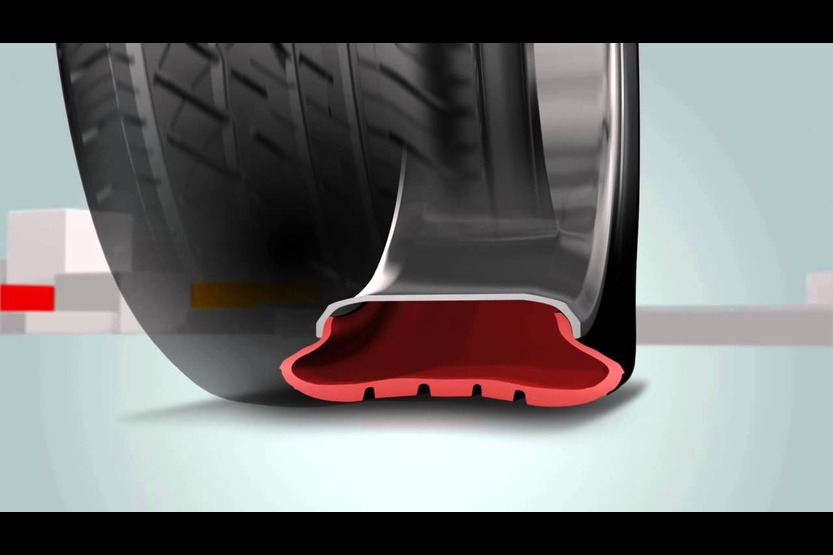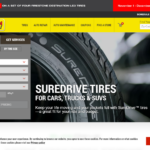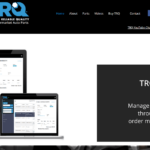Run flat tires revolutionized the driving experience, offering the promise of continued mobility even after a puncture.
However, one critical question remains: How long do run flat tires last?
Understanding the lifespan of these innovative tires is crucial for drivers looking to maintain safety, efficiency, and cost-effectiveness on the road.
In this informative guide, we’ll delve into the factors influencing the longevity of run flat tires, dispel common myths, and provide practical tips for extending their lifespan.
Whether you’re a seasoned driver or new to the concept of run flat tires, gaining insights into their durability is essential for making informed decisions about your vehicle’s maintenance and performance.
Understanding Run-Flat Tires

Run-flat tires are a type of tire that can be driven on for a limited distance after a puncture or loss of pressure. They have become increasingly popular in recent years, as they provide a measure of safety and convenience for drivers. In this section, we will take a closer look at the construction and design of run-flat tires, as well as the different types of run-flat technology.
Construction and Design
Run-flat tires are made of rubber, just like regular tires. However, they are designed to be stronger and more durable than regular tires, with reinforced sidewalls that can support the weight of the vehicle even when the tire is punctured or deflated. This is achieved through the use of stronger materials and thicker rubber in the sidewalls.
In addition to the reinforced sidewalls, run-flat tires may also have other features that help them maintain their shape and support the weight of the vehicle. For example, some run-flat tires have molded fins on the outer edge that draw heat away from the tire, helping it to last longer. Others may have a self-sealing material that can plug small punctures and prevent air from escaping.
Run-Flat Technology Types
There are two primary types of run-flat tire systems: the self-supporting system and the support ring system. In a self-supporting system, the tire is designed to support the weight of the vehicle even when it has no air pressure. This is achieved through the use of reinforced sidewalls and other design features.
In a support ring system, the tire is fitted with a special ring that supports the weight of the vehicle when the tire is punctured or deflated. This ring is typically made of a hard material like steel or plastic, and is attached to the wheel itself.
Both types of run-flat technology have their advantages and disadvantages. Self-supporting tires are generally more expensive, but they offer better performance and are more reliable in extreme conditions. Support ring systems are generally less expensive, but they can be less effective in some situations and may require more maintenance.
Advantages and Disadvantages of Run-Flats
Run-flat tires are designed to allow a vehicle to continue driving even after a puncture or blowout, providing drivers with an added layer of safety and mobility. However, there are also some disadvantages to consider when deciding whether to purchase run-flat tires.
Safety and Mobility
One of the biggest advantages of run-flat tires is that they allow drivers to continue driving even after a puncture or blowout. This can be a lifesaver in situations where changing a tire is not safe or convenient, such as on a busy highway or in bad weather. Run-flat tires also eliminate the need for a spare tire, which can free up space in the trunk and reduce the weight of the vehicle.
Another advantage of run-flat tires is that they are equipped with a tire pressure monitoring system (TPMS), which alerts drivers when tire pressure is low. This can help prevent accidents caused by underinflated tires, which can affect handling and cause blowouts.
Cost and Replacement Considerations
One of the biggest disadvantages of run-flat tires is that they can be expensive to replace. According to a study by J.D. Power, run-flat tires last an average of 6,000 fewer miles than non-run-flats, partly because they cannot be patched. This means that drivers may have to replace a second, undamaged tire along with the damaged one, which can be costly.
In addition, run-flat tires can cost as much as double what equivalent conventional tire costs. For instance, major retailer Tire Rack currently charges between $205 and $273 for various Bridgestone run-flat tires that fit a 2016 BMW 328i. In comparison, the retailer lists different non-run-flat tires made by Bridgestone fitting that BMW for between $181 and $207.
Despite the convenience and safety benefits of run-flat tires, they may not be the best choice for everyone. Drivers who prioritize cost and convenience may prefer to stick with conventional tires and carry a spare. However, those who value safety and mobility may find that run-flat tires are worth the extra expense.
Run-Flat Tire Lifespan Factors

Run-flat tires are designed to last as long as regular tires under normal use, which is typically 50,000 to 60,000 miles [1]. However, their lifespan can be affected by various factors. In this section, we will discuss the main factors that can impact the lifespan of run-flat tires.
Tread Wear and Maintenance
Tread wear is one of the most important factors that can affect the lifespan of run-flat tires. Regular maintenance, such as checking tire pressure, alignment, and rotations, can help extend the life of the tires. It is recommended to check the tread depth regularly and replace the tires when they reach the minimum tread depth [4].
Run-flat tires cannot be patched like regular tires when punctured, and should be replaced with a brand new run-flat tire [1]. It is important to follow the manufacturer’s recommendations for tire maintenance and replacement to ensure optimal performance and lifespan.
Driving Habits and Conditions
Driving habits and conditions can also impact the lifespan of run-flat tires. Aggressive driving, such as hard braking and accelerating, can cause the tires to wear out faster. Driving on rough or uneven roads can also cause the tires to wear out more quickly.
Maintaining the correct tire pressure is important for the lifespan of run-flat tires. Overinflated or underinflated tires can cause uneven wear and reduce the lifespan of the tires. It is recommended to check the tire pressure regularly and adjust it as needed [2].
Run-Flat Tire Brands and Models
When it comes to run-flat tires, the market is dominated by a few major brands, including Bridgestone, Michelin, Continental, Pirelli, and Goodyear. Each of these manufacturers offers a range of run-flat tire options, and it can be challenging to determine which one is the best fit for your vehicle.
Comparing Manufacturer Offerings
Bridgestone is one of the leading manufacturers of run-flat tires, with several models available for a variety of vehicles. Their Potenza RE960AS Pole Position RFT is a popular choice for high-performance cars, while the DriveGuard RFT is designed for use in standard passenger vehicles.
Michelin also has a strong presence in the run-flat tire market, with options like the Primacy MXM4 ZP and the Pilot Sport A/S 3+ ZP. Both of these models offer excellent handling and performance, making them a great choice for drivers who prioritize safety and comfort.
Continental is another top brand when it comes to run-flat tires, with options like the ExtremeContact DWS06 and the ContiSportContact 5P SSR. These models are designed to provide excellent traction and handling in a range of weather conditions.
Pirelli is known for its high-performance tires, and their run-flat options are no exception. The P Zero RFT and Cinturato P7 RFT are both popular choices for sports cars and other high-performance vehicles.
Goodyear also has a range of run-flat tire options, including the Eagle Sport All-Season ROF and the Ultra Grip Performance 2 ROF. These models are designed to provide excellent handling and traction in a range of conditions.
Specific Model Reviews
BMW, Mercedes, and Toyota are just a few of the car manufacturers that offer vehicles with run-flat tires as standard equipment. If you’re considering purchasing a car with run-flat tires, it’s essential to research the specific model and tire options to ensure they meet your needs.
Research shows that run-flat tires can last as long as conventional tires, with a lifespan of 30,000 to 70,000 miles. However, it’s important to note that the lifespan of a run-flat tire can be affected by factors like driving style, road conditions, and maintenance.
Emergency Handling and Replacement

What to Do After a Puncture
If a run-flat tire gets punctured, the driver can continue driving for a limited distance at a reduced speed. The maximum distance that a run-flat tire can cover after a puncture varies depending on the tire manufacturer and model. However, most run-flat tires can travel up to 50 miles at a speed of 50 mph after a puncture.
After a puncture, it is important to check the tire for damage. If the puncture is too large or the tire is damaged, it may not be safe to continue driving on it. In such cases, the driver should replace the tire or seek professional repair at a repair shop.
When to Replace Run-Flat Tires
Run-flat tires are designed to last as long as conventional tires, which is typically between 30,000 to 70,000 miles. However, the lifespan of a run-flat tire can vary depending on the type of tire, the size of the vehicle, the amount of driving, and the road conditions.
It is important to replace run-flat tires when the tread depth has worn down to 4/32 of an inch or when the tire has been damaged beyond repair. Driving on worn-out tires can be dangerous, especially during emergency situations where the driver needs to make sudden stops or turns.
Final Thoughts
In summary, run-flat tires are a great option for drivers who want to avoid being stranded on the side of the road with a flat tire. They offer the convenience of being able to drive on a flat tire for a limited amount of time, giving drivers enough time to safely reach a repair shop or home.
According to the search results, run-flat tires can last as long as conventional tires, with an average lifespan of 30,000 to 70,000 miles. However, it’s important to note that the lifespan of run-flat tires can be affected by various factors such as driving habits, road conditions, and maintenance.
To ensure the longevity of run-flat tires, it’s recommended to regularly check the tire pressure, rotate the tires, and avoid overloading the vehicle. Additionally, drivers should be aware of the limitations of run-flat tires and not exceed the recommended speed or distance when driving on a flat tire.
Overall, run-flat tires offer a reliable and convenient option for drivers who want to avoid the hassle of changing a flat tire on the side of the road. By following proper maintenance and driving practices, drivers can enjoy the benefits of run-flat tires for a long time.
Sources:

![Does Fix-a-Flat Work? [Is Fix-a-Flat Effective?] does fix-a-flat work](https://roadsumo.com/wp-content/uploads/2021/11/does-fix-a-flat-work-150x150.jpg)







